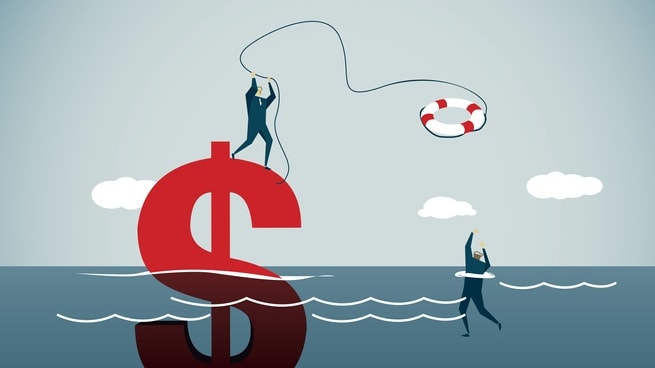Emergency Relief Funds Throw Employees a Lifeline During Pandemic
Coronavirus-related grants are tax-free for employees and deductible for employers

As the COVID-19 pandemic and related state and local lockdowns took hold, employers scaled back their businesses dramatically, laying off millions of employees during a time when finding a new job would be difficult at best. Even people who kept their jobs may have lost household income if spouses or other family members were laid off or furloughed.
While many employees are now eligible for enhanced unemployment insurance payments, others don't qualify or may need additional assistance.
Recognizing the resulting hardships, a growing number of employers are attempting to provide emergency relief where they can.
The hospitality industry has been particularly hard hit by the pandemic and social distancing mandates. Although many restaurants remain open for takeout and delivery, most have been unable to retain all of their employees.
To help those who have been laid off, restaurant owners are setting up ad hoc fundraisers and emergency funds. For example, one Washington, D.C., restaurant, Seven Reasons, is setting aside 2.5 percent of sales for its employee wellness fund, which will make grants to laid-off employees, said Ezequiel Vazquez-Ger, the restaurant's owner.
Espita, another Washington, D.C., restaurant, is soliciting donations through online ordering apps and its own system and plans to give that money to laid-off staff, with those who do not qualify for unemployment payments taking priority.
Setting Up a Fund
Employers that want to disseminate larger amounts of money should consider setting up a formal emergency fund to ease administration and deal with any federal, state and local legal and tax considerations.
Before the pandemic, some employers used emergency funds to help employees deal with individual crises, such as terminal illness or natural disaster. Now, however, "COVID-19 is requiring that employers stretch to find ways to respond and financially help employees meet some basic needs," said Holly Welch Stubbing, CEO of E4E Relief, a Charlotte, N.C.-based nonprofit that helps employers set up emergency funds. Those basic needs include money to pay for food, rent and utilities for those who've been laid off or to pay for safe child care options for those who continue to report to work.
Under normal circumstances, establishing this type of fund and making grants could take six to eight weeks. The urgency of the pandemic is causing employers to look for a much faster solution. Stubbing said E4E Relief is offering employers out-of-the-box solutions to set up an emergency fund in three to five days.
[SHRM members-only HR Q&A: What is a tax-advantaged employee crisis fund, and what are the guidelines for establishing such a fund?]
Whatever approach employers take, there are important questions they must ask when setting up a fund. These include:
- How will the fund be financed? Employers can donate a lump sum to the fund, hold fundraising events, and accept donations from the public and their own employees.
- What are the criteria for grants? Factors to consider include how to determine the grant size and maximum payments, and which employees are eligible and under what circumstances.
For example, employers can limit grants to illness-related expenses, such as housing assistance for employees in quarantine following coronavirus exposure or for those who are medically vulnerable, or for employees who are unable to work from home and need child care help.
Tax Advantages
Because the pandemic has been declared a national disaster, any grants will be tax-free for employees and deductible for employers as long as they are used for expenses incurred by employees because of the disaster, explained Travis L.L. Blais, managing partner with Blais Halpert Tax Partners in Boston.
"There is surprisingly little red tape—neither the employee nor the employer need to substantiate the expenses in written records," he said. "I would recommend some kind of written policy to create fair standards for eligibility and manner and timing of payment, and to serve as a memory aid later to show to any inquisitive tax authorities."
When Toronto-based outerwear firm Canada Goose started an employee emergency fund for Canadian and U.S. employees affected by the pandemic, the company's CEO pledged at least three months' salary toward the effort. Many of the company's 5,000 employees asked to donate, as well.
"Our goal with the employee support fund is to help people pay for essential items that may become unaffordable, like groceries and rent, during our temporary production and store closures," said Kara MacKillop, the company's executive vice president for people and culture. "We started with employees who aren't eligible for government assistance and who have urgent needs," she said. However, it quickly became apparent that even employees eligible for government assistance would need help.
Listen and Adjust
As employers respond to the growing financial hardships of laid-off or furloughed employees, they may need to make changes to their assistance and adjust to new developments and needs. "There's no playbook for this type of situation," MacKillop said. "Be ready to pivot. It won't be the same one day to the next."
She urged employers to "get creative and over-communicate." It's important to establish ways for employees to talk to someone from the company who can help with fund administration, she said. This direct contact can also provide employers with a window into what employees are facing in their day-to-day lives so they can respond as needed.
Joanne Sammer is a New Jersey-based business and financial writer.
Related SHRM Articles:
Pandemic Takes a Toll on Employees' Emotional Well-Being, SHRM Online, April 2020
Trump Signs Coronavirus Relief Bill Aiding Employers and Workers, SHRM Online, March 2020
Employers Can Make 'Disaster Payments' to Coronavirus-Affected Employees, SHRM Online, March 2020
Using Leave-Sharing Plans During the COVID-19 Pandemic, SHRM Online, March 2020
An organization run by AI is not a futuristic concept. Such technology is already a part of many workplaces and will continue to shape the labor market and HR. Here's how employers and employees can successfully manage generative AI and other AI-powered systems.



